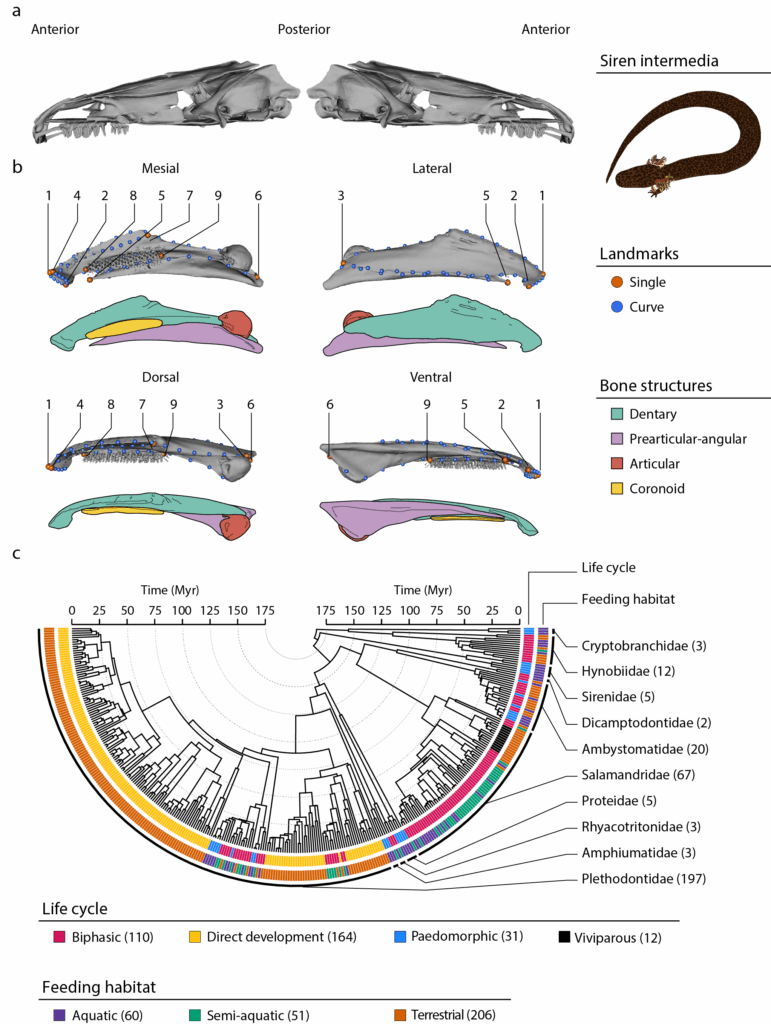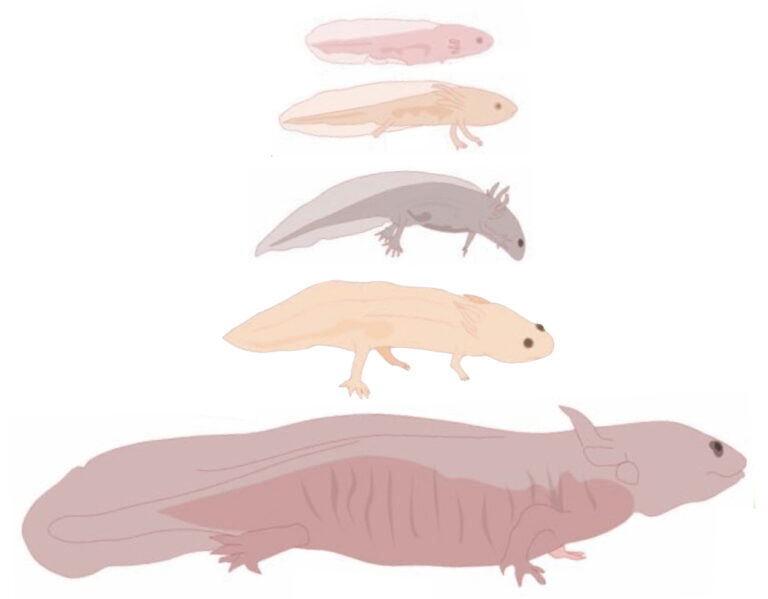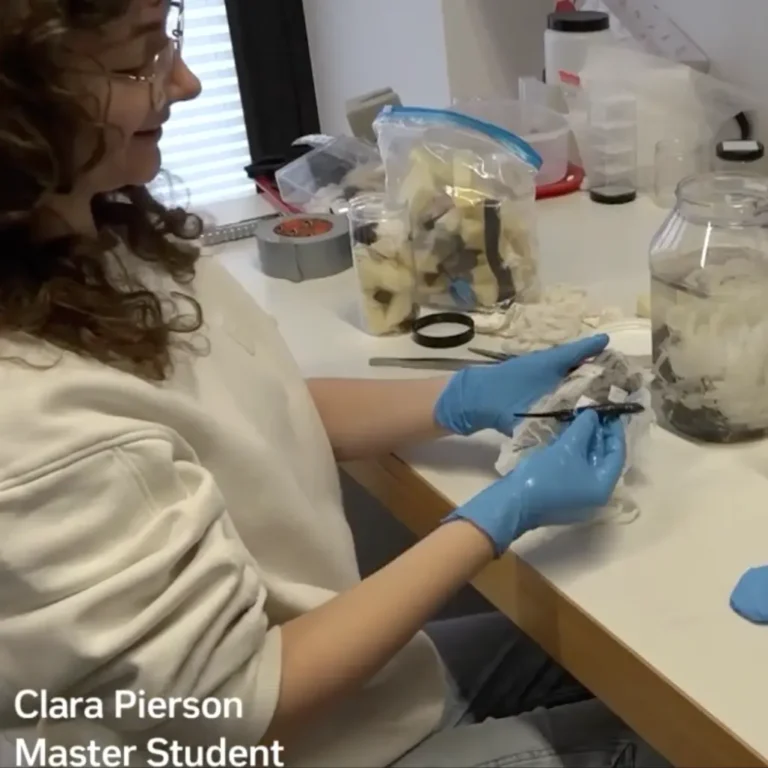In our latest paper, we explore how variation in metamorphosis — the dramatic body transformation that some animals undergo — plays a major role in shaping lower jaw diversity among salamanders and newts.
Metamorphosis is a spectacular developmental process, marked by profound changes in an individual’s morphology and physiology over the course of its life, often accompanied by a shift in environment and ecology. It’s the stage of development when a caterpillar becomes a butterfly, or a tadpole transforms into a frog.
Metamorphosis is widespread across the animal kingdom and is notably found in one of your favorite groups of amphibians: salamanders and newts (order Caudata). This group is particularly fascinating because it displays remarkable diversity — with over 750 species — and occupies a wide range of ecological niches. Some species are primarily aquatic or terrestrial, others live in caves or trees, and some undergo dramatic seasonal ecological changes.
What makes these animals even more intriguing is their diversity in life cycles — that is, the series of developmental changes an organism experiences in its lifetime—, particularly in the timing and completeness of metamorphosis. Some species undergo complete metamorphosis, either before or after hatching, while others undergo partial metamorphosis, retaining larval traits into adulthood. These are known as paedomorphic species, and the most iconic among them is undoubtedly the axolotl.
In our study, we examined how metamorphosis and life cycle variation shape the evolution of the lower jaw in salamanders and newts. We focused on the lower jaw due to its key role in feeding, aiming to understand how different life cycles contribute to the evolution of feeding strategies.

Using 3D models of lower jaw from 317 living species, we found that both life cycle type and body size influence lower jaw shape, with complex interactions between the two. Our results suggest that species undergoing complete metamorphosis exhibit more modular, or independently evolving, lower jaw structures — a trait that may facilitate adaptation to terrestrial feeding. In contrast, species with partial metamorphosis tend to have more integrated lower jaw structures, which could promote rapid adaptation to specific environments — particularly among species that remain aquatic.
Overall, our study highlights how metamorphosis can shape the evolution of lower jaw structures and their functions, offering new insights into how changes in developmental timing (a process known as heterochrony) contribute to the extraordinary diversity of forms and ecologies found in nature.



